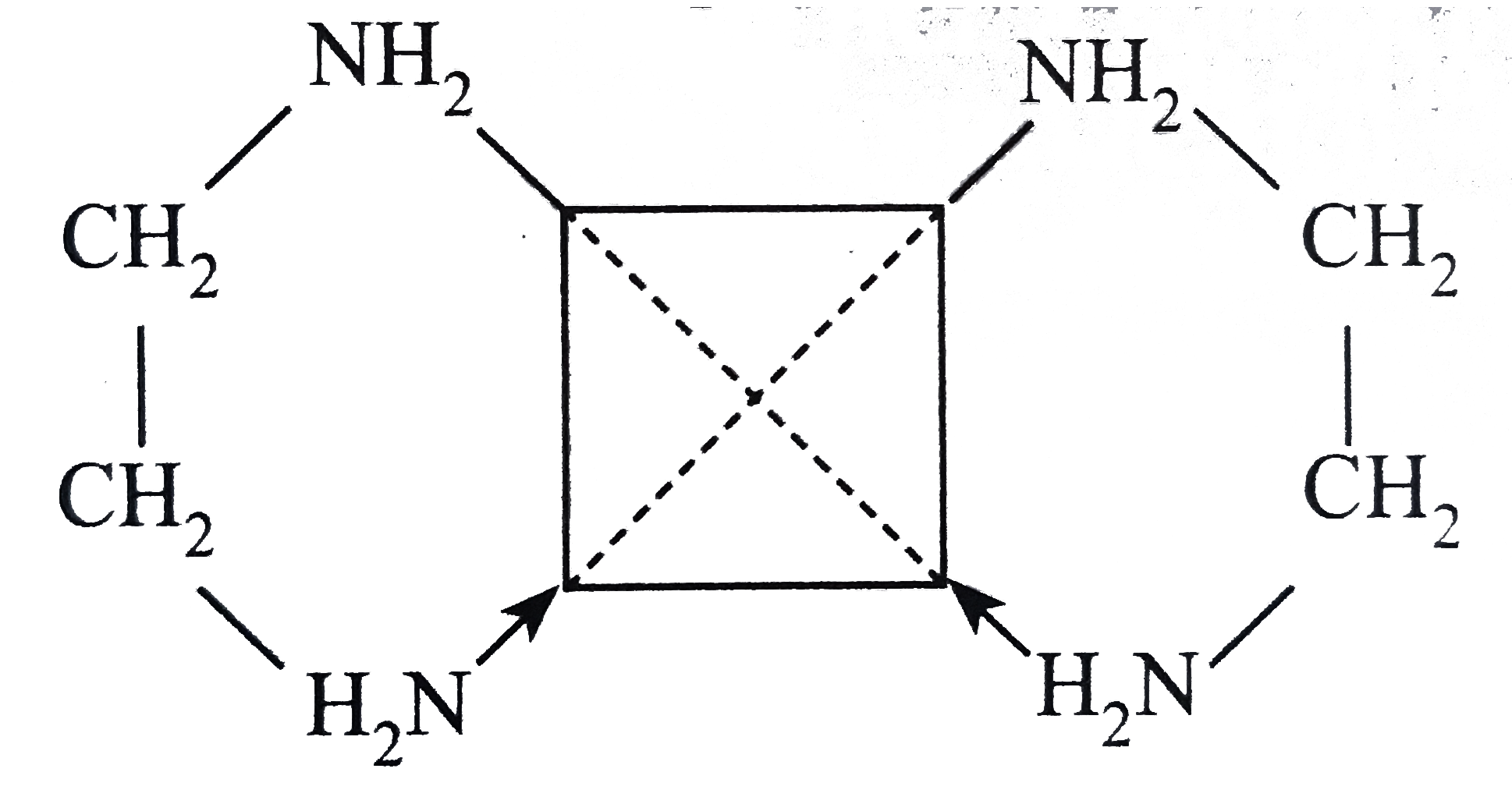A: All square planar complexes can exhibit geometrical isomerism.
R: In square planar complexes metal assumes sp3 hybridisation.
If both Assertion & Reason are true and the reason is the correct explanation of the assertion, then mark (1)
If both Assertion & Reason are true but the reason is not the correct explanation of the assertion, then mark (2).
) If Assertion is true statement but Reason is false, then mark (3).
If both Assertion and Reason are false statements, then mark (4)
The correct Answer is:D
To analyze the given assertions and determine their validity, we will break down the concepts involved in square planar complexes, geometrical isomerism, and hybridization.
Step 1: Understanding Geometrical Isomerism
Geometrical isomerism occurs when compounds have the same molecular formula but different spatial arrangements of atoms or groups. In coordination compounds, this often arises due to the different possible arrangements of ligands around a central metal atom.
Hint: Geometrical isomerism is related to the spatial arrangement of ligands around the metal center.
Step 2: Square Planar Complexes and Geometrical Isomerism
Square planar complexes can exhibit geometrical isomerism, but not all square planar complexes will show this property. For example, in a square planar complex with the formula MA2B2, where A and B are different ligands, the arrangement can lead to different isomers (cis and trans forms). However, if all ligands are identical, there will be no isomerism.
Hint: Check if the ligands in the square planar complex are different to determine if geometrical isomerism is possible.
Step 3: Evaluating Assertion A
The assertion states that "All square planar complexes can exhibit geometrical isomerism." This is incorrect because only certain square planar complexes (those with at least two different types of ligands) can exhibit geometrical isomerism. Thus, Assertion A is false.
Hint: Not all square planar complexes have different ligands; this affects their ability to show geometrical isomerism.
Step 4: Understanding Hybridization in Square Planar Complexes
In square planar complexes, the central metal atom typically undergoes dsp² hybridization. This involves the mixing of one d orbital, one s orbital, and two p orbitals to form four equivalent hybrid orbitals arranged in a square planar geometry.
Hint: Remember that hybridization type can be determined by counting the number of ligands and the geometry they create.
Step 5: Evaluating Assertion R
The assertion states that "In square planar complexes, the metal assumes sp³ hybridization." This is incorrect, as square planar complexes are characterized by dsp² hybridization, not sp³. Therefore, Assertion R is also false.
Hint: Hybridization types are linked to the geometry of the complex; square planar complexes do not use sp³ hybridization.
Conclusion
Both assertions A and R are false.
1. Assertion A: False - Not all square planar complexes exhibit geometrical isomerism.
2. Assertion R: False - Square planar complexes involve dsp² hybridization, not sp³.
Geometrical isomerism occurs when compounds have the same molecular formula but different spatial arrangements of atoms or groups. In coordination compounds, this often arises due to the different possible arrangements of ligands around a central metal atom.
Square planar complexes can exhibit geometrical isomerism, but not all square planar complexes will show this property. For example, in a square planar complex with the formula MA2B2, where A and B are different ligands, the arrangement can lead to different isomers (cis and trans forms). However, if all ligands are identical, there will be no isomerism.
The assertion states that "All square planar complexes can exhibit geometrical isomerism." This is incorrect because only certain square planar complexes (those with at least two different types of ligands) can exhibit geometrical isomerism. Thus, Assertion A is false.
In square planar complexes, the central metal atom typically undergoes dsp² hybridization. This involves the mixing of one d orbital, one s orbital, and two p orbitals to form four equivalent hybrid orbitals arranged in a square planar geometry.
The assertion states that "In square planar complexes, the metal assumes sp³ hybridization." This is incorrect, as square planar complexes are characterized by dsp² hybridization, not sp³. Therefore, Assertion R is also false.
Both assertions A and R are false.
2. Assertion R: False - Square planar complexes involve dsp² hybridization, not sp³.
Topper's Solved these Questions
- ALCOHOLS, PHENOLS AND ETHERSBOOK - AAKASH INSTITUTECHAPTER - ALCOHOLS, PHENOLS AND ETHERSEXERCISE - Try yourself
4 Videos
- ALCOHOLS, PHENOLS AND ETHERSBOOK - AAKASH INSTITUTECHAPTER - ALCOHOLS, PHENOLS AND ETHERSEXERCISE - Exercise
40 Videos
- ALCOHOLS, PHENOLS AND ETHERS BOOK - AAKASH INSTITUTECHAPTER - ALCOHOLS, PHENOLS AND ETHERS EXERCISE - Try Yourself
5 Videos
Similar Questions
Knowledge Check
Assertion: All square planar complexes can exhibit geometrical isomerism
Reason: In square planar complexes .AIf both (A) and (R) are correct and (R) is the correct explanation of (A) .BIf both (A) and (R) are correct and (R) is not the correct explanation of (A) .CIf(A) is correct, but (R) is incorrect .DBoth (A) and (R) are incorrect .The square planar complexes are
A[Pt(NH3)2Cl2]B[Ni(CN)4]2−C[NiCl4]2−D[PtCl4]2−Square planar complex which shows geometrical isomerism is
AMAB3BMA4CMABCDDMA3B
A square planar complex represented as:

View SolutionAssertion (A) All square planar complexes do not necessarily exhibit geometrical isomerism.
Reason ( R) In such complexes metal generally assumes 8p3-hybrid state.
View SolutionA square planar complex is represented as:
View SolutionThe square planar complex (MABCD) can show
View SolutionA square planar complex represented as it will show which isomerism –

View Solution
